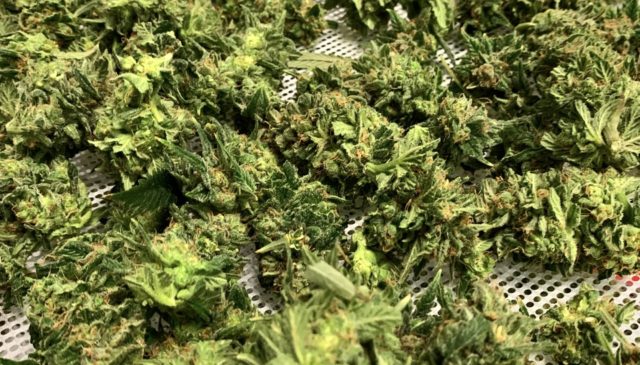
Cannabis is a genus of plants from the Cannabaceae family. Cannabis plants produce a unique family of terpenophenolic compounds called cannabinoids. Tetrahydrocannabinol (THC) and cannabidiol (CBD) are the two cannabinoids that are usually most commonly produced, and only the former is psychoactive. The term hemp or industrial hemp usually refers to varieties with a low THC content (<0.3%). Hemp can be grown for many different purposes, be it for its seed, oil, food, and medicinal properties. [1] Certain hemp chemopreparations contain high levels of cannabidiol (CBD), the non-psychoactive phytocannabinoid that is of great interest because of its therapeutic potential for treating anxiety, cognition, movement disorders, and pain. [2] Hemp fibers are used in industry for a variety of purposes, including clothing, textiles, and cosmetics. For the past decade, hemp has been viewed as a potential source of biofuels with high conversion rates and yields: the hemp biomass can be fermented to produce low-carbon fuels such as bioethanol or biobutanol, while the oil obtained from hemp seeds is successfully converted into biodiesel through base-catalyzed transesterification. [3]
Hemp contains many phytocannabinoids in the aerobic part of the plant and CBD is usually the most abundant: through extraction processes, it is possible to isolate this valuable cannabinoid in the form of pure isolate or full-spectrum extract if the end product also contains other cannabinoids and phytonutrients. Unlike stems, leaves and flowers, hemp seeds do not contain phytocannabinoids and are used to obtain an oil with a rich profile of nutrients, fiber, vitamins, minerals and a high percentage of fatty acids, especially omega-6 and omega-3, optimal for human health. [4] It is possible to add plant material to the seed extraction as well, resulting in a full spectrum hemp oil with phytocannabinoids in the final extract.
References:
[1] Adesina, I. et al. An overview of the current state of knowledge about growing conditions, agronomic soil health practices, and uses of hemp in the United States. Agriculture, 10 (4), 129 (2020) doi: 10.3390 / agriculture10040129 [Times cited= 21]
[2] VanDolah, HJ et al. Clinician’s Guide to Cannabidiol and Hemp Oils. Mayo Clinic Procedure. (2019). doi: 10.1016 / j.mayocp.2019.01.003 [Journal impact factor= 6.942] [Times cited= 106]
[3] Si-YuLiet al. The feasibility of converting Cannabis sativa L. oil to biodiesel. , Bioresource Technology]101 (21), 8457-8460 (2010). doi: 10.1016 / j.biortech.2010.05.064 [Journal impact factor= 7.539] [Times cited= 75
[4] JC Callaway. Hemp seeds as a food source: an overview. , Euphytica 140 (1-2), 65-72. (2004) doi: 10.1007 / s10681-004-4811-6 [Journal impact factor= 1.614] [Times cited= 656]
picture: Hemp_Picture Sabina Pulone
